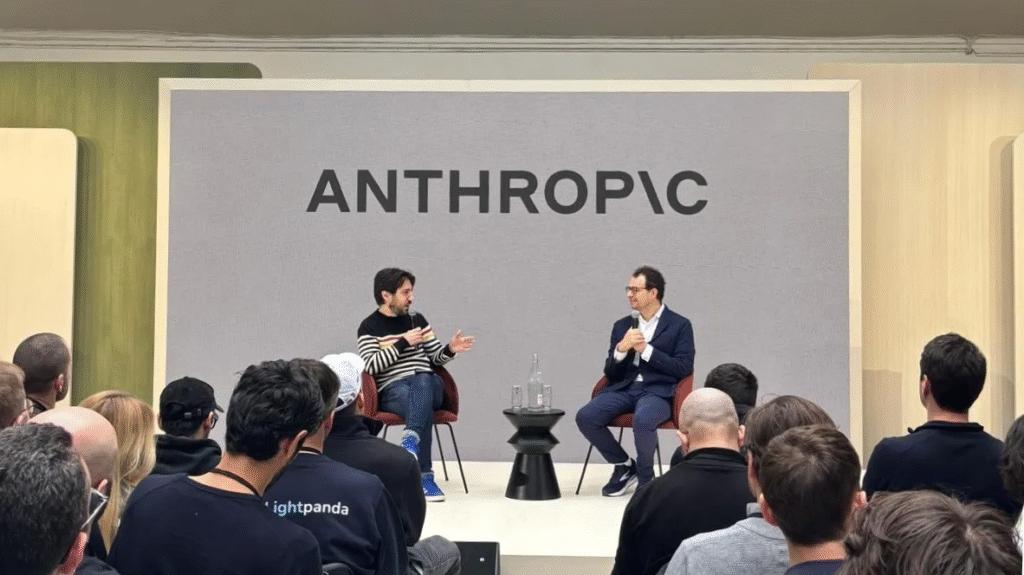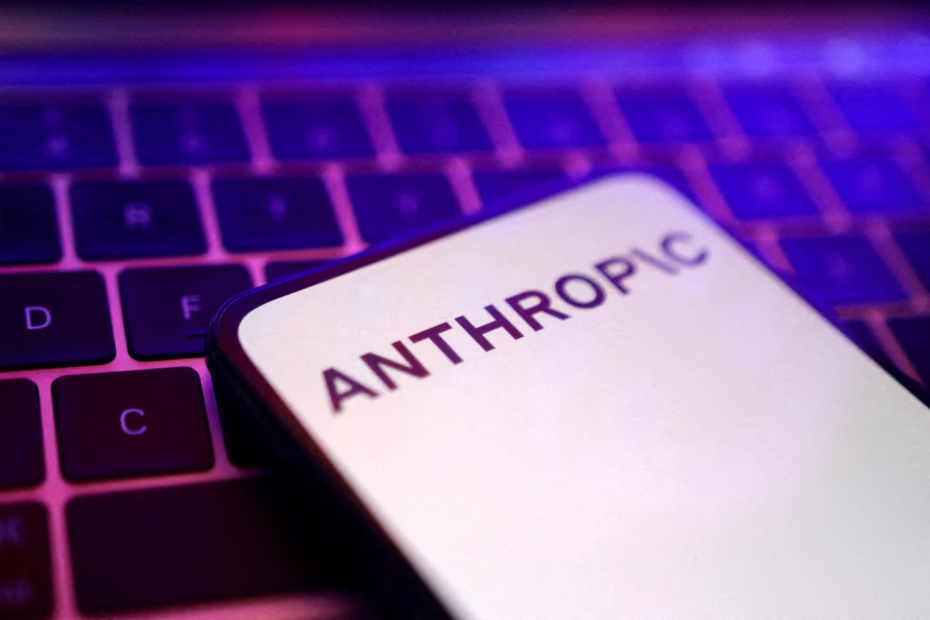Artificial Intelligence (AI) has quickly become one of the most influential technologies shaping our future. While many companies race to develop more powerful AI systems, one organization stands out for its focus on safety, alignment, and responsible development—Anthropic.
Founded by former OpenAI researchers, Anthropic is best known for its Claude AI assistant, which has become a direct competitor to ChatGPT and Google Gemini. But what makes Anthropic different, and why is it one of the most talked-about AI companies in 2025?
In this blog, we’ll explore the history, mission, products, competitors, advantages, and future of Anthropic, while breaking down why it plays such a critical role in today’s AI ecosystem.
1. What is Anthropic?
Anthropic is an AI safety and research company founded in 2021 by former OpenAI employees, including Dario Amodei and Daniela Amodei. The company’s vision is to build “reliable, interpretable, and steerable AI systems.”
While other companies focus on raw power and scale, Anthropic emphasizes alignment—making sure AI behaves in ways that are safe, predictable, and beneficial for humanity.
📌 Visual Idea: Infographic timeline of Anthropic’s journey (2021 launch → Claude 1 → Claude 2 → Claude 3 → 2025 advancements).
2. The Mission of Anthropic

Anthropic’s mission revolves around AI safety and responsible innovation.
Core Principles:
- Alignment-First Development: Ensuring AI systems align with human values.
- Transparency: Building interpretable models to understand why AI makes certain decisions.
- Steerability: Giving users more control over how AI responds.
- Long-Term Responsibility: Preparing for the challenges of advanced general intelligence (AGI).
👉 Example: Unlike some AI tools that can produce unpredictable or biased outputs, Claude is designed to be more truthful, helpful, and harmless.
3. The Claude AI Assistant
Anthropic’s flagship product is Claude, named after Claude Shannon (the father of information theory). It’s an advanced conversational AI similar to ChatGPT but with unique features.
Versions of Claude (2025):
- Claude 1 (2022): First release, focused on safe conversations.
- Claude 2 (2023): Improved reasoning and longer context.
- Claude 3 (2024): State-of-the-art performance in coding, creative writing, and research tasks.
- Claude 3.5 / Claude Next (2025): Expanded memory, faster responses, deeper knowledge integration.
Claude’s Key Features:
- Context Window: Handles up to 200,000 tokens, allowing it to process entire books, research papers, or legal documents.
- Business-Friendly: Claude is widely used for enterprise solutions, customer support, and compliance.
- Balanced Personality: Prioritizes safety, politeness, and clarity over risky or controversial answers.
👉 Example: A law firm uses Claude to review and summarize lengthy legal documents, cutting hours of manual work into minutes.
📌 Visual Idea: Chart comparing Claude vs ChatGPT vs Google Gemini.
4. Anthropic vs Competitors
The AI landscape in 2025 is competitive, with several key players. Let’s compare:
| Feature | Claude (Anthropic) | ChatGPT (OpenAI) | Google Gemini | Mistral AI |
|---|---|---|---|---|
| Focus | Safety, alignment | General-purpose AI | Search + AI ecosystem | Open-source models |
| Context Length | 200K+ tokens | 128K tokens (GPT-4 Turbo) | 128K tokens | 32K tokens |
| Strengths | Interpretable, safer AI | Advanced creativity, ecosystem | Deep integration with Google | Lightweight, efficient |
| Weaknesses | Less creative than GPT | Sometimes biased outputs | Privacy concerns | Smaller ecosystem |
👉 Verdict: Anthropic’s Claude shines in enterprise use cases and safety-first applications, while OpenAI and Google dominate in creativity and integrations.
5. Real-Life Applications of Anthropic’s AI

Anthropic’s AI tools are already making an impact across industries:
- Legal Sector: Summarizing lengthy case studies and legal documents.
- Healthcare: Supporting doctors with patient data analysis (with strong privacy safeguards).
- Finance: Detecting fraud, automating compliance, and analyzing risk.
- Education: Helping students understand complex topics with safe, accurate answers.
- Customer Support: Claude-powered chatbots providing 24/7 reliable service.
👉 Example: An insurance company uses Claude for policy analysis, ensuring compliance with regulatory requirements.
6. Pros & Cons of Anthropic
Pros ✅
- Strong focus on AI safety and ethics.
- Long context handling (great for research and legal work).
- Reliable and less likely to generate harmful outputs.
- Enterprise-friendly with compliance and privacy features.
- Transparent about AI limitations.
Cons ❌
- Slightly less creative than GPT in storytelling or imaginative tasks.
- Higher enterprise pricing than some open-source alternatives.
- Smaller ecosystem compared to Google or Microsoft.
- Consumer adoption still catching up with competitors.
📌 Visual Idea: Infographic with “Anthropic Pros vs Cons.”
7. Future Trends: Anthropic in 2025 and Beyond
What’s next for Anthropic?
- Claude 4 Launch: Expected to integrate deeper reasoning, multimodal input (text + image + audio), and faster real-time processing.
- Global Expansion: More enterprise partnerships in Europe and Asia.
- AI Regulation Partnerships: Working with governments to shape global AI safety standards.
- AGI Preparation: Researching methods to ensure future superintelligent systems remain aligned.
- Consumer Tools: Possible release of lightweight Claude apps for personal use.
👉 Prediction: By 2026, Anthropic may position Claude as the #1 enterprise AI assistant for legal, healthcare, and finance.
8. Competitors & Alternatives in the AI Space
| Category | Leading Player | Competitors | Pricing Model |
|---|---|---|---|
| Enterprise AI Assistants | Anthropic Claude | ChatGPT Enterprise, Gemini for Workspace | Subscription/licensed |
| General AI Chatbots | ChatGPT | Claude, Gemini, Perplexity AI | Freemium → Paid |
| Open-Source Models | Mistral AI | Meta LLaMA, Falcon | Free / Paid hosting |
| Creative AI Tools | OpenAI DALL·E + GPT | MidJourney, Claude (limited creativity) | Subscription |
👉 Verdict: Anthropic dominates where safety and long-context enterprise tasks matter most.
9. Why Anthropic Matters

Unlike many startups focused on quick scaling, Anthropic is addressing some of the biggest risks of AI: misinformation, bias, and alignment.
Its unique value lies in:
- Providing businesses with safer AI systems.
- Creating tools that are both powerful and transparent.
- Collaborating with global regulators for responsible innovation.
👉 Example: When governments debated AI censorship and alignment in 2024, Anthropic was at the center of discussions due to its alignment-first model.
10. FAQs About Anthropic
Q1. Who founded Anthropic?
Anthropic was founded in 2021 by Dario Amodei, Daniela Amodei, and former OpenAI researchers.
Q2. What is Claude?
Claude is Anthropic’s AI assistant, designed to be safe, reliable, and enterprise-focused, competing with ChatGPT and Google Gemini.
Q3. How is Anthropic different from OpenAI?
While OpenAI emphasizes innovation and creativity, Anthropic prioritizes safety, interpretability, and long-context reasoning.
Q4. Is Anthropic open source?
No, Anthropic provides proprietary AI systems, but it publishes research on safety and alignment.
Q5. Who uses Anthropic’s AI?
Businesses in law, healthcare, finance, and customer support widely adopt Claude for compliance-friendly, reliable AI solutions.
Conclusion: Anthropic’s Role in the Future of AI
The story of Anthropic is about more than just creating another AI chatbot—it’s about building AI that the world can trust. With its focus on safety, alignment, and reliability, Anthropic is carving out a unique space in an industry dominated by giants like OpenAI and Google.
In 2025, Anthropic’s Claude AI is already proving that safe AI can also be powerful. As the world debates the ethics and risks of advanced AI, Anthropic stands as a voice of caution, responsibility, and innovation.
